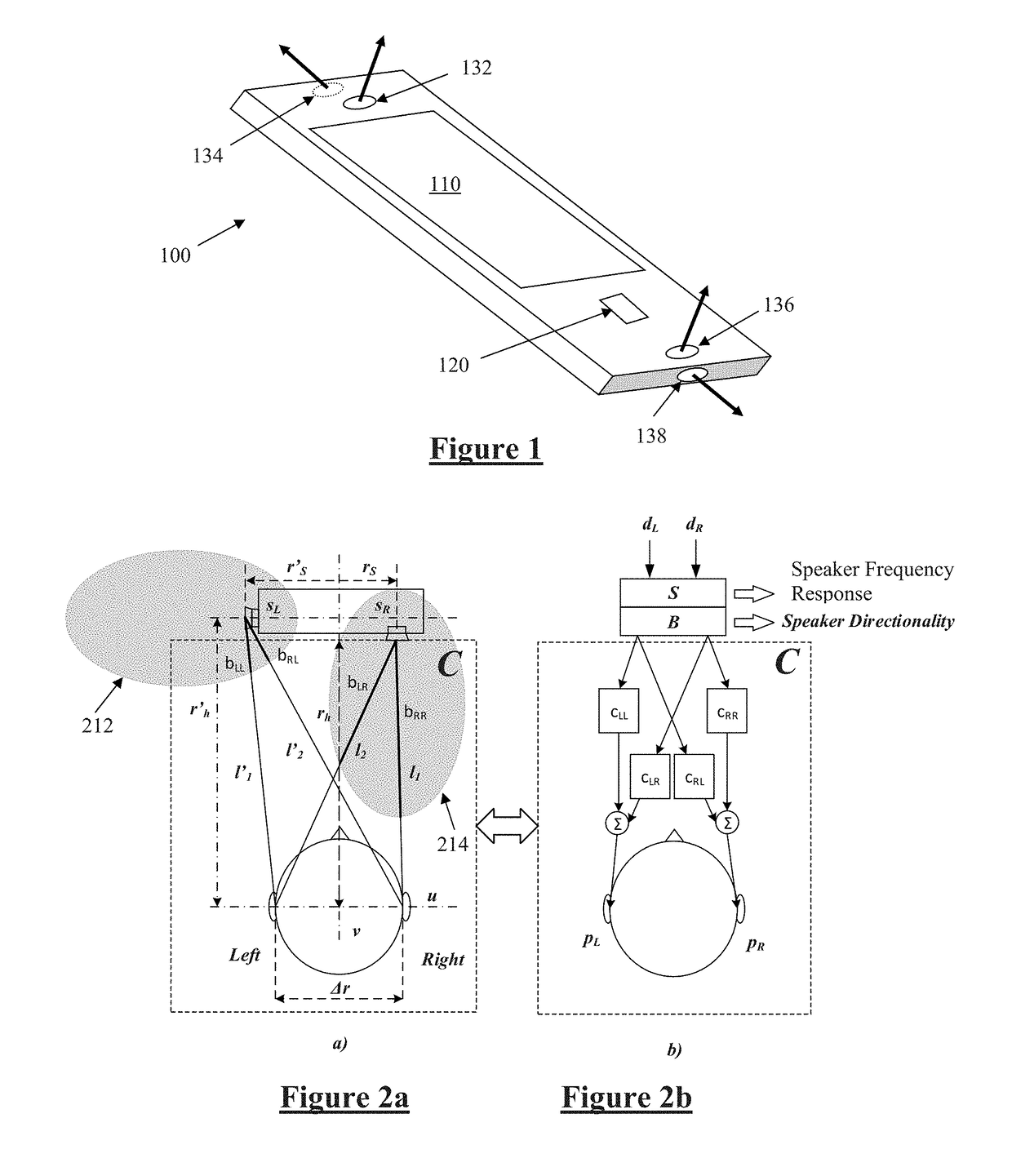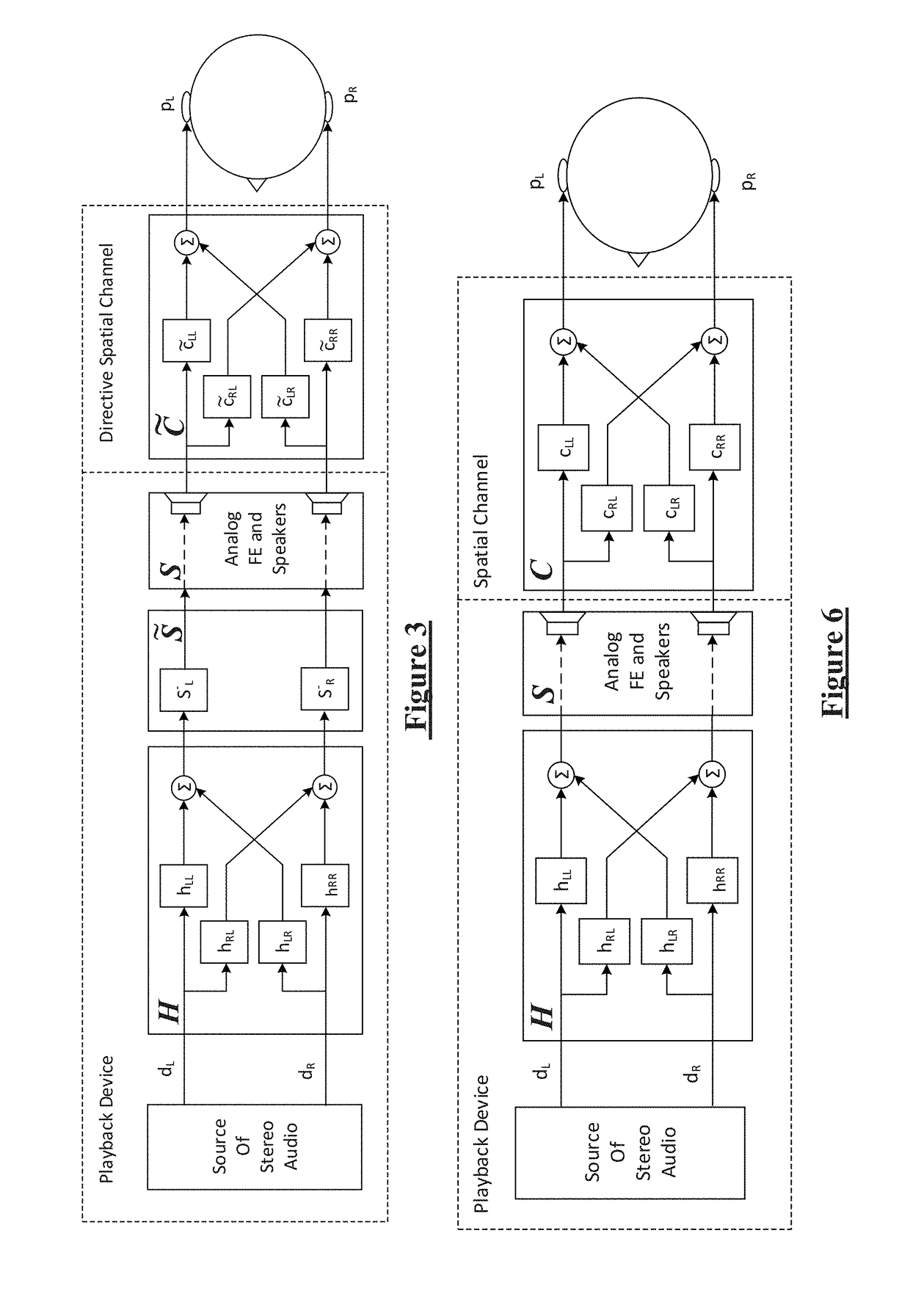Method and apparatus for acoustic crosstalk cancellation
a technology of acoustic crosstalk and cancellation method, which is applied in the field of speaker playback, can solve the problems of inability to generate significant stereo perception from the onboard speaker, little or no stereo effect, and inability to perceive stereo, so as to cancel the impact of directional channels, and maintain spectral coloration within tolerable ranges
- Summary
- Abstract
- Description
- Claims
- Application Information
AI Technical Summary
Benefits of technology
Problems solved by technology
Method used
Image
Examples
Embodiment Construction
[0052]FIG. 1 illustrates a portable device 100 with touchscreen 110, button 120 and a plurality of loudspeakers 132, 134, 136, 138. The following embodiments describe the playback of audio using such a device, for example to accompany a video playback. As indicated, speakers 132 and 136 are both mounted in ports on a front face of the device 100. Thus, speakers 132 and 136 exhibit a directionality indicated by the respective arrow, each being at a normal to a plane of the front face of the device. In contrast, speakers 134 and 138 are mounted in ports on opposed end surfaces of the device 100. Thus the nominal directionality of speaker 134 is anti-parallel, i.e. 180°, to that of speaker 138, and perpendicular, i.e. 90°, to that of speakers 132 and 136. Other devices may have one or more speakers mounted elsewhere on the device and as described in the following such other devices may also be configured to deliver embodiments of the present invention. The following embodiments describ...
PUM
 Login to View More
Login to View More Abstract
Description
Claims
Application Information
 Login to View More
Login to View More - R&D
- Intellectual Property
- Life Sciences
- Materials
- Tech Scout
- Unparalleled Data Quality
- Higher Quality Content
- 60% Fewer Hallucinations
Browse by: Latest US Patents, China's latest patents, Technical Efficacy Thesaurus, Application Domain, Technology Topic, Popular Technical Reports.
© 2025 PatSnap. All rights reserved.Legal|Privacy policy|Modern Slavery Act Transparency Statement|Sitemap|About US| Contact US: help@patsnap.com



